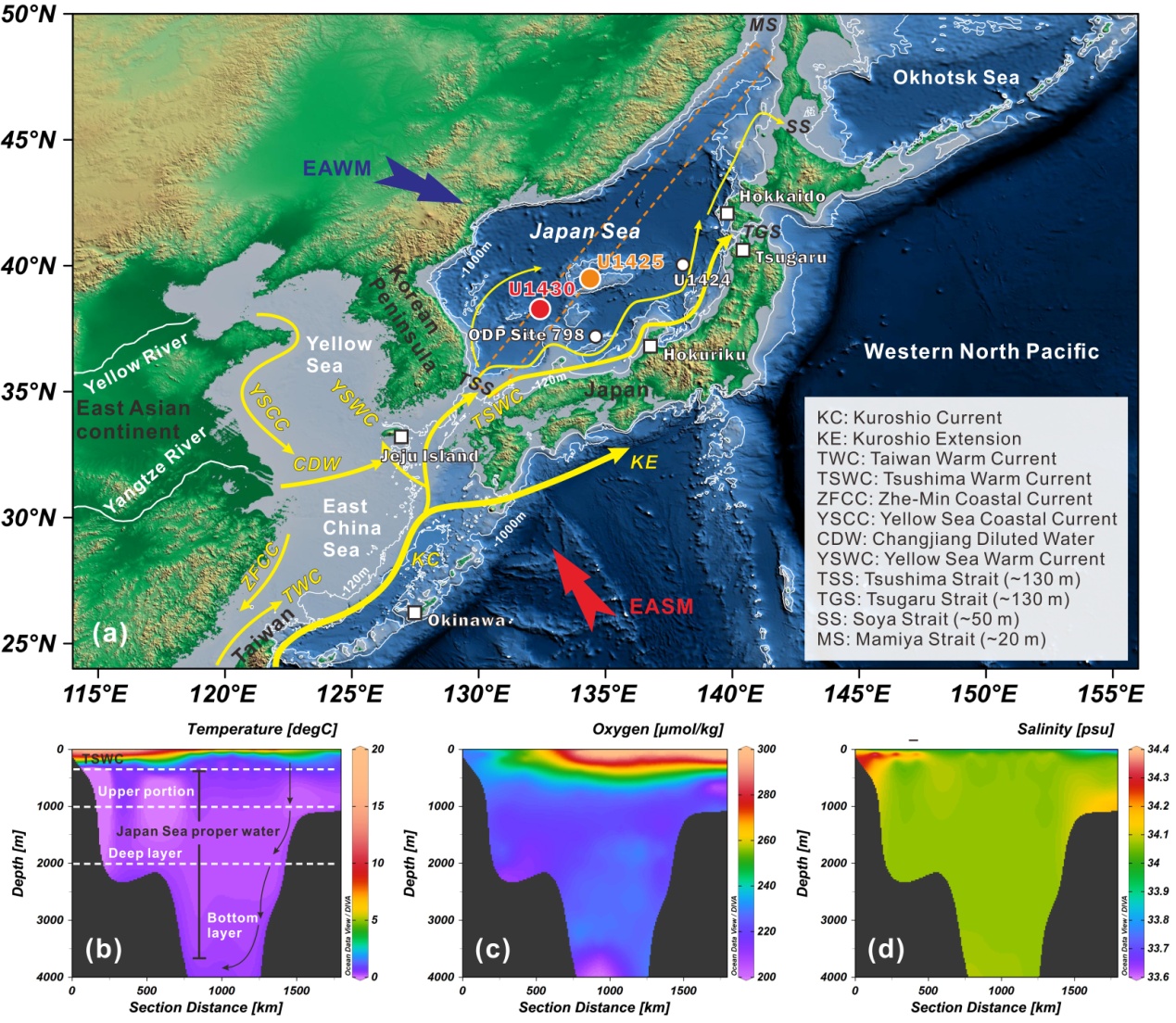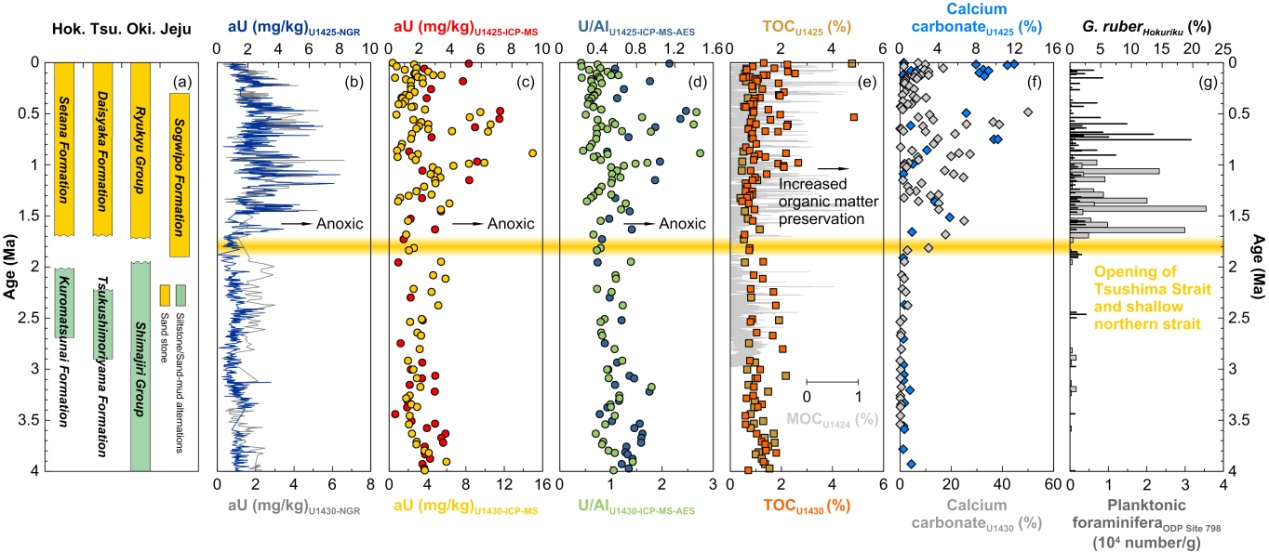Oxygen is a prerequisite for marine organisms cellular respiration. Changes in the ocean oxygen levels can significantly impact the ocean ecosystem and even global carbon cycle.
The Japan Sea is the largest marginal sea in the northwest Pacific Ocean. Semi-enclosed geographical pattern and climatological characteristics of the Japan Sea lead to its redox condition sensitive to tectonic activities, sea-level change and monsoon evolution, making it an ideal region to study the interaction between tectogenesis, climate and ocean paleo-redox changes in the geologic history.
However, studies of paleo-redox changes in the Japan Sea focused on the tectonic and orbital scales since the Pliocene remain scarce to date.
Recently, the research team led by Prof. WAN Shiming from the Institute of Oceanology of the Chinese Academy of Sciences (IOCAS) provided new insight into tectonic and orbital scale of Japan Sea redox changes since the Pliocene.
The study was published in Paleoceanography and Paleoclimatology on Feb. 11.
Researchers presented two high-resolution paleo-redox records during the last 4 Ma at IODP Sites U1425 and U1430 drilled in the Japan Sea. They found the Japan Sea paleo-redox history suggests a remarkable changes from relatively oxic to periodic oxic-anoxic conditions at about 1.7 million years ago. "This was mainly caused by the restricted inflow of North Pacific Intermediate Water in response to the uplift of northeastern Japanese islands and shallow northern straits, as well as the opening of the Tsushima Strait and the periodic intrusion of Tsushima Warm Current following the sea level change during glacial-interglacial cycles," said Dr. ZHAO Debo, the first author.
Orbital scale of Japan Sea redox changes suggest long eccentricity, eccentricity and obliquity cycles. A transition from relatively oxic to anoxic conditions in the Japan Sea during glacial periods before and after middle Pleistocene transition has also been found, which was mainly controlled by the changes of amplitude of sea level and inflow of Tsushima Warm Current combined with the East Asian monsoon evolution.
"This research reveals the strong effects of paleoenvironment changes on the ocean redox conditions, and thus highlights their role in the ocean biogeochemical cycles participated by oxygen through regulating the efficiency of organism respiration on the geological time scales, which may have significant impacts on the global carbon cycle," said Prof. WAN.
This work was funded by National Natural Science Foundation of China and Strategic Priority Research Program of the Chinese Academy of Sciences, China.

Fig. 1 Map showing the location of the IODP Site U1425 and U1430, bathymetry of the Japan Sea and the flow of surface currents

Fig. 2 Comparision of the tectonic evolution and paleoceanographic variation in and surrounding the Japan Sea during the last 4 Ma
Zhao, D., Wan, S., Zhai, L., Shi, X., & Li, A. (2022). Tectonic and orbital imprints in the redox history of Japan Sea since the Pliocene. Paleoceanography and Paleoclimatology, 37, e2021PA004333.
ZHAO Debo
Institute of Oceanology
E-mail: zhaodebo@qdio.ac.cn
(Editor: ZHANG Yiyi)
|
|

Address: 7 Nanhai Road, Qingdao, Shandong 266071, China
Tel: 86-532-82898902 Fax: 86-532-82898612 E-mail: iocas@qdio.ac.cn


